CELEBRATE THE RUN - DAY 5 - MILE 19: Delilah Martinez of Pilsen's Vault Gallerie Speaks on What Makes Pilsen the Vibrant Art-Influenced Neighborhood It Is and the Start of the Mural Movement

CELEBRATE THE RUN - DAY 5 - MILE 19 focuses on Pilsen, the Chicago Marathon neighborhood well-known for its vibrant and socially relevant wall murals. As runners make their way through Chicago’s largest Latino community, by way of 18th Street, they are introduced to a lively street made up of shops, restaurants, and Mexican bakeries. Local residents and businesses come out in force to welcome the Marathon to the neighborhood with festivity, Latin music, dress, and dancing.
We spoke to Delilah Martinez, owner of Vault Gallerie in Pilsen, manager of the artist Sentrock, and founder of the Mural Movement, the recent movement of painted murals on small business board-ups in support of the protests that started in June.
We asked Delilah why she thinks the Pilsen residents show up big on Marathon Sunday, how the Mural Movement started, and how murals provide more than just public art for a neighborhood’s community.
When did you open Vault Gallerie?
About three and a half years ago.
Why did you feel the need to open a gallery?
I actually opened it up by mistake. I was dating an artist and his show got canceled so I volunteered to throw him a show, and I did. He had about 17 pieces and we sold 14. Originally. He thought I wouldn't be able to sell the artwork. That's when I kind of realized that I was really good at selling things that I love, which is art. From that point, I started having more artists ask me to throw them shows and asking me to manage their projects.

Why do you think Pilsen is kind of the hub for street art and murals?
It’s very cultural. It's been like this for decades. I think it has to do with the residents and the people working here. A lot of artists live here. A lot of different types of people live here. They all appreciate our good culture and good food. It just kind of comes with the territory.
What does putting a mural or street art piece in a specific neighborhood provide for the neighborhood itself?
It provides value. Hope. Color. Colors that make it vibrant. I always say a mural is not just a mural. I've found, especially in particular neighborhoods with the majority people of color, if the mural contains images that look like them, I noticed that the locals get really happy. Their eyes light up. I try to do murals that people could relate to or see themselves in. For example on the Southside, I worked with an artist named Haley. On her mural, it said “Black is Beautiful” and the mural depicted a woman of color and I often pass by that area and I see women looking at the mural and they say, “that looks like my lips. That looks like my hair.” They relate to it and they see themselves in it and it makes people happy.
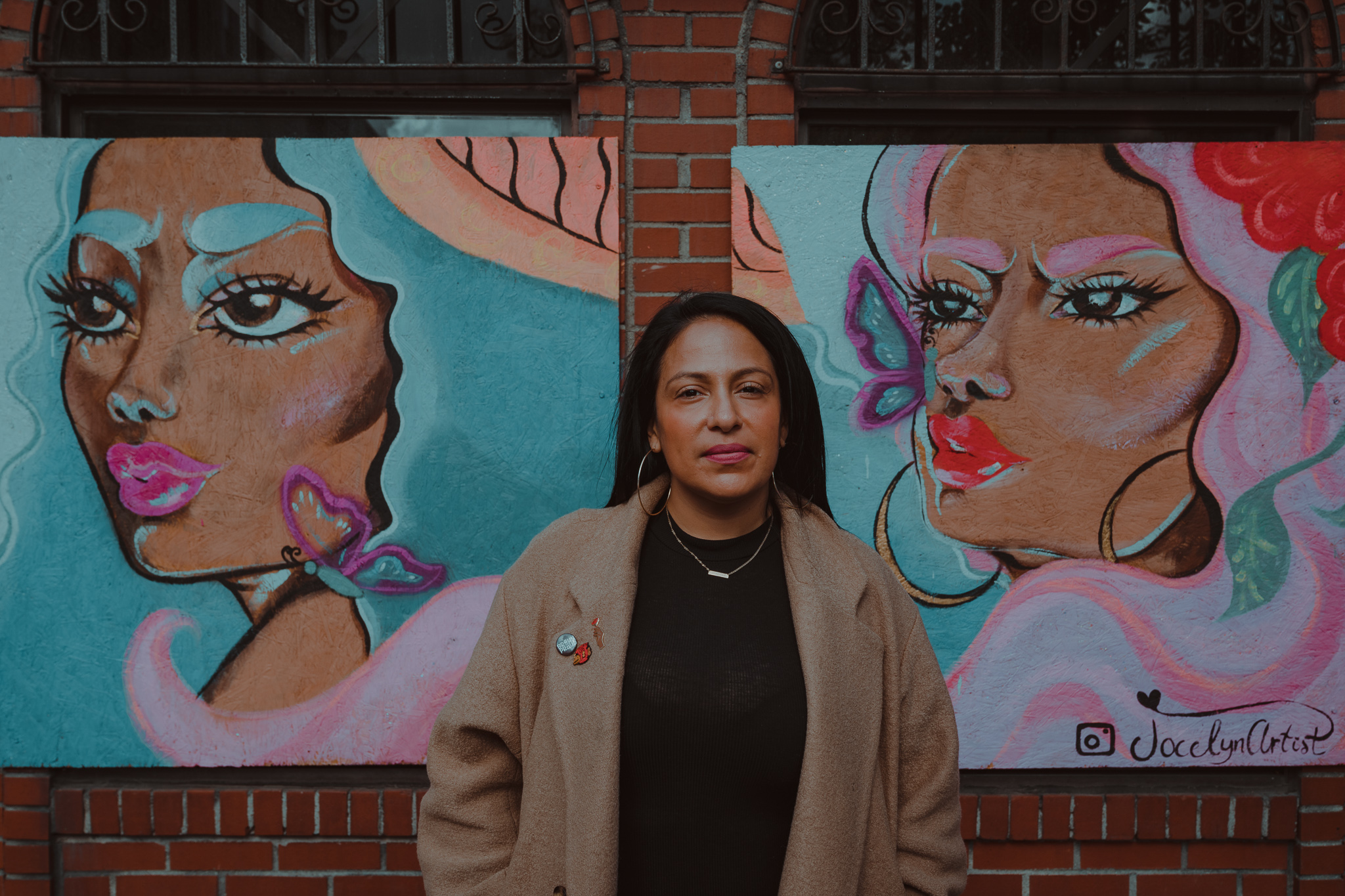
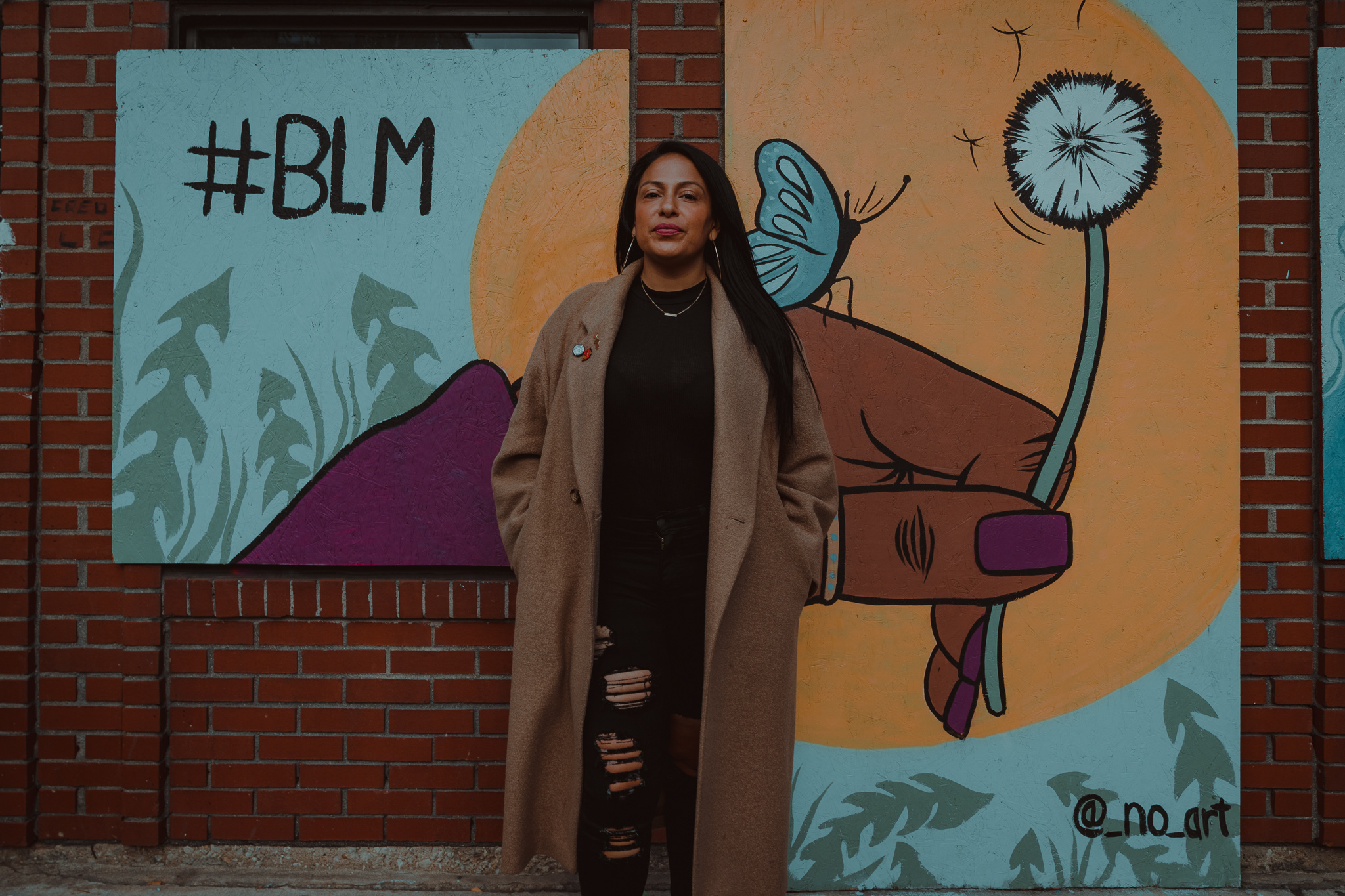
You mentioned on our walk around the neighborhood that lately you’ve been trying to provide more than just murals to a neighborhood. You’ve been providing landscaping and paid youth volunteers with your mural installations?
As a part of the mural movement, we also include community engagement, which includes the youth from that area and from my area [Pilsen] working together to volunteer, which ends up being turned into a paid project. I help volunteers work together and collaborate with the artists to create a bond for future projects. We also reach out to residents to have them come have free tacos or coffee and work on the mural with the artists themselves. Lastly, we add beautifying community elements, which include landscaping, repainting poles, picking up trash, and cleaning up the area. We like to include the residents because we want them to be part of the project because it's for them, it's not for us, it's for them. When you make them part of something, they want to protect it. They want to take care of it. They want to take care of that area.
How do you choose where to put a mural? And how do you choose who to work with and the theme?
It’s not easy to find a wall to put a mural that supports the message I'm going with, which recently has been Black and Brown Unity and Black Lives Matter. Wherever the wall has been approved, I look at the area and see what type of people are there and I ask myself “what is their culture here?” Then I try to find artists that they can relate to with their artwork as well to try to match it. I really try to match a neighborhood with an artist. Most of the time property owners that want a mural have a theme in mind.
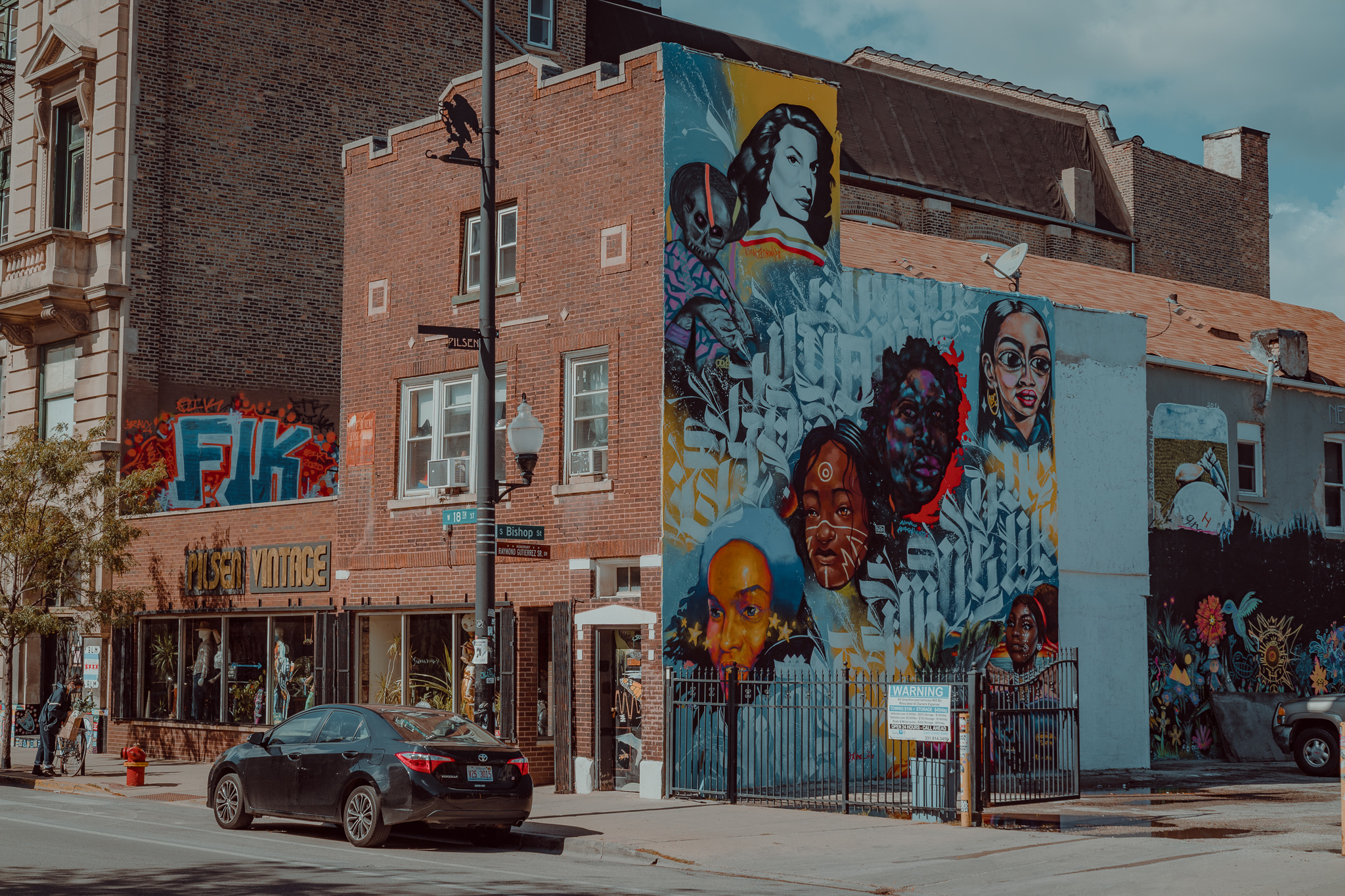
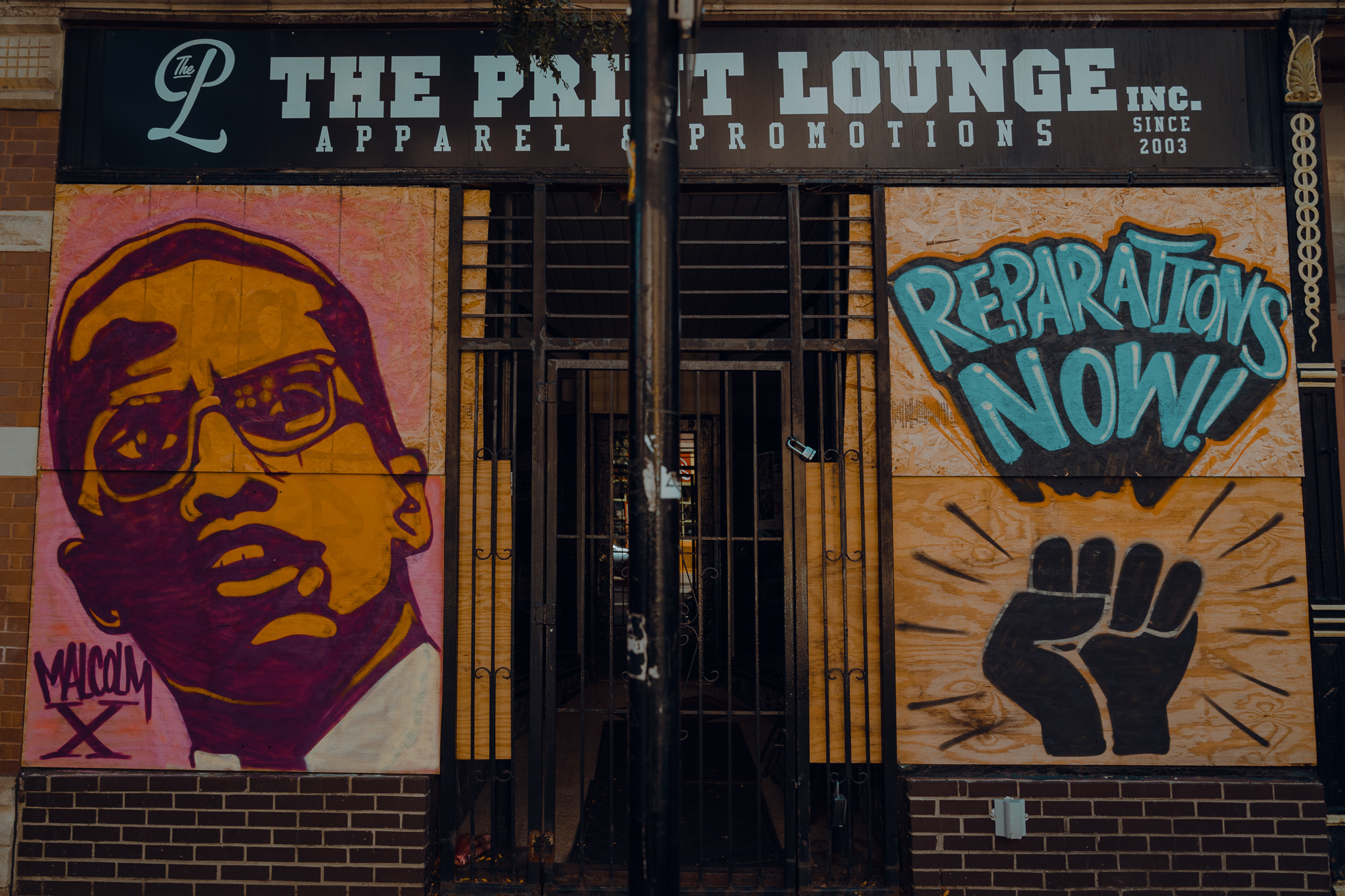
What is the Mural Movement that you keep referring to?
The Mural Movement refers to the murals painted on boards during the protests that started in June. I started calling it that because I felt like it was a movement of murals on boards that supported Black Lives Matter and Black and Brown Unity. It’s a movement through murals that supports those messages.
What do you do with the board-ups once people take them down?
I pick them up and wrap them up and put them in storage until I'm ready to do an exhibit. It's been really difficult because some owners are ready to take them down and some are not. We also had one business owner that refuses to give them back. But I got the majority of them back and I will exhibit them.
Why do you think the Mural Movement is important to the city of Chicago?
It gives a sense of value and culture. Life wouldn’t be as fun or beautiful to look at if it wasn't for art. It's really important to support the artists. Most of these artists, their work is like their diary. It tells stories and also supports history. A lot of the murals here in Pilsen are historical. For the Mural Movement, now that I'm thinking about it, how fun is it going to be later in time, past my time, where you see these pieces that documented our present time. A lot of these public art murals have to do with the times.
When did you see a boost in popularity with the mural movement? How did it start and how did you get involved?
On June 2nd, which is around the time we started having a curfew and the protests for George Floyd began. A business owner who is also my friend reached out to me saying “we're all putting boards up. Everybody is going to stay up late and look out for each other's businesses.” He asked if I could have an artist come spray paint Black Lives Matter on the board. Other business owners saw us doing it and the next day I already had six or seven stores on 18th street painted.
Then I started getting on my Instagram, asking anybody if their Southside business or Westside business want a mural. I started getting requests every single day. Now I’ve done around 76 or 77 murals.
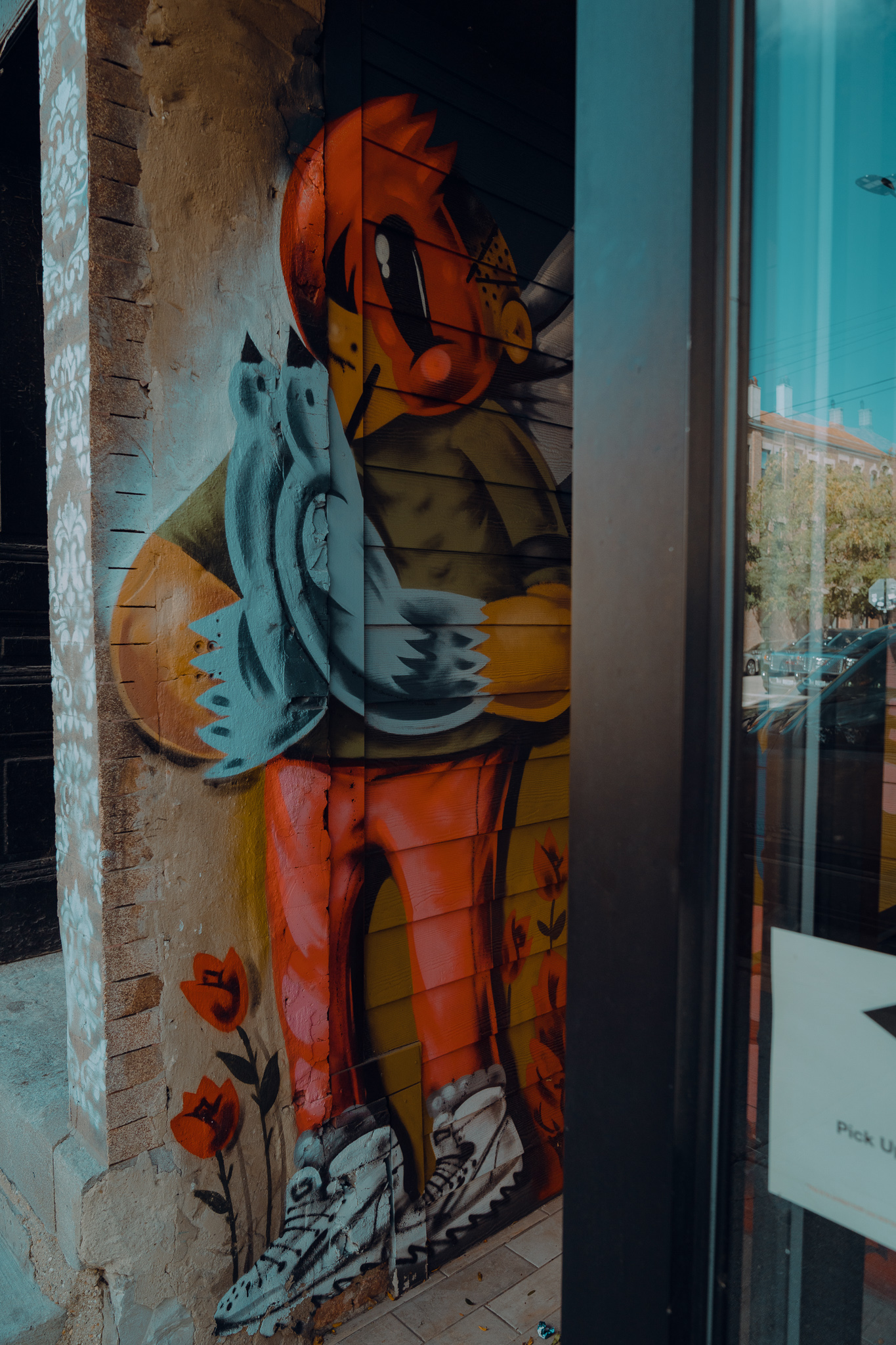

Why do you think people look forward to this portion of the Chicago Marathon course?
I think it has a lot to do with the residents and also the vibrant colors on our streets. Besides the murals we have, wheat paste, we have graffiti, we have the artists living here. We have passionate people that live here that love to support people that are passionate. A lot of the neighbors and I, we wake up early, we have our drums, we get our coffee, we get a DJ out there.
Why do you think the community here shows up so big to celebrate the marathon?
One of the special things about Pilsen is that we really support each other. I know a lot of other business owners and we support each other. We cheer each other on all the time. We try to show the same support to the people that come through and appreciate our neighborhood. That support we give the marathon runners, we actually give that to each other as residents daily.
You want to show everyone that love and that support that you guys show each other.
Exactly. I've lived in high rises in downtown. I’ve lived in nice areas, but I'd never want to move away from the support I get in this area.
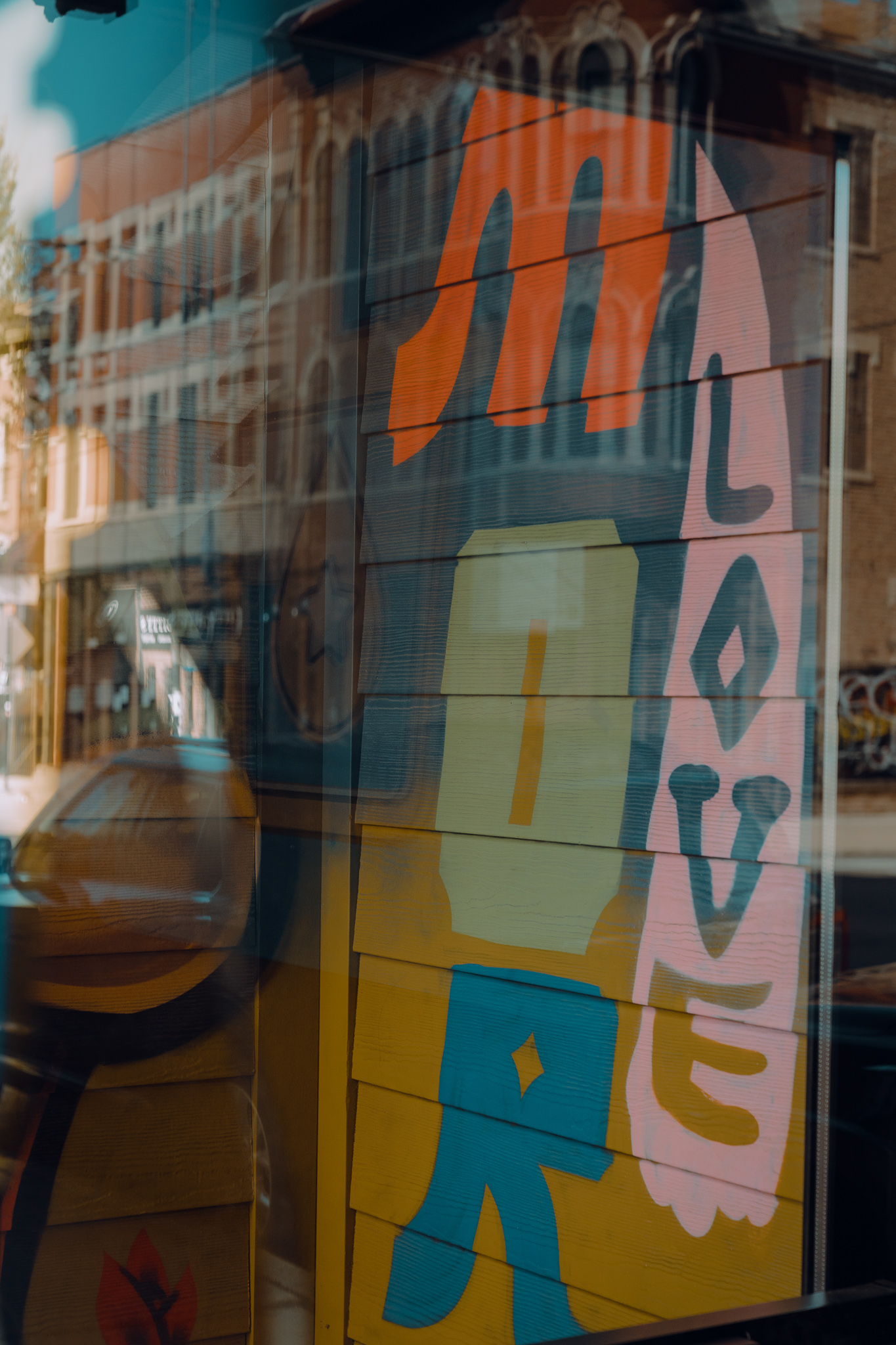
Connect With Us
See the latest from Fleet Feet Chicago